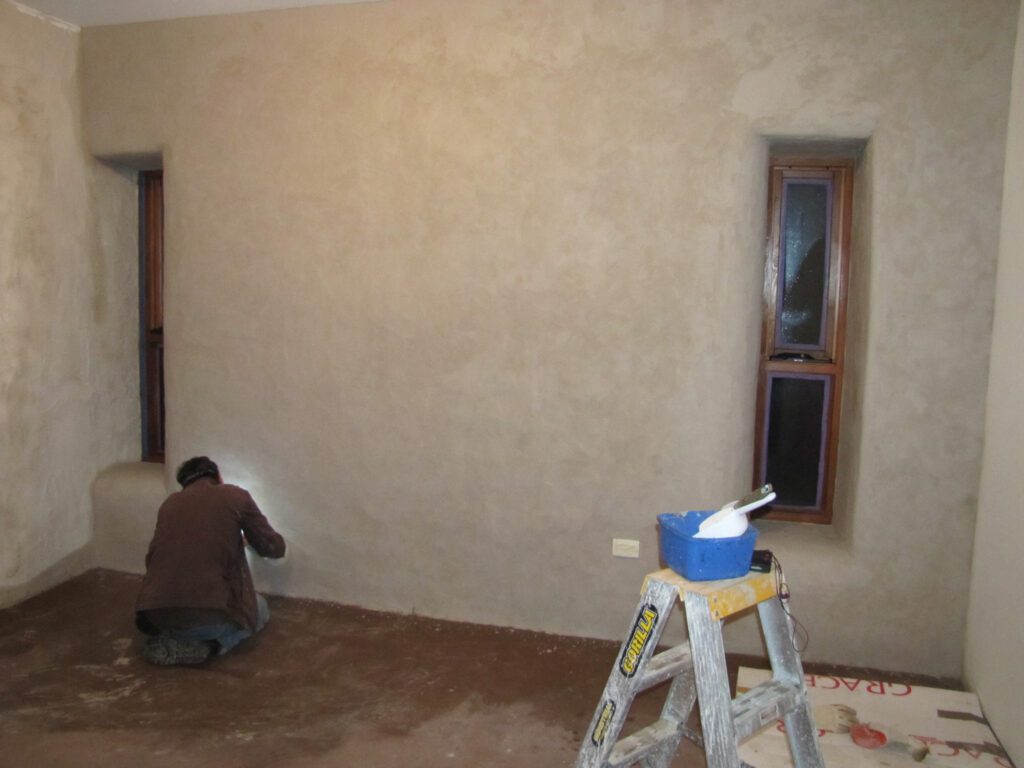Master the art of how to plaster a wall with our expert guide that reveals the secrets professionals don’t want you to know
Understanding the Basics of Wall Plastering
Plastering is a skilled trade that transforms rough, uneven walls into smooth, durable surfaces ready for decoration. At Kent Plasterers, we’ve witnessed firsthand how proper plastering can dramatically enhance the aesthetic appeal and value of properties across Tunbridge Wells and Kent. The key to successful plastering lies in understanding that it’s a two-stage process: the first coat (backing coat) provides a sturdy foundation, while the second coat (skim coat) delivers that coveted smooth finish. Recent industry statistics show that professionally plastered walls can increase property values by up to 15%, making it a worthwhile investment for homeowners and property developers alike.
Essential Tools and Materials for Professional Plastering
- Plastering Trowel – A high-quality stainless steel trowel (11-13 inches)
- Hawk – For holding and transporting plaster
- Bucket Trowel – For mixing and transferring plaster
- Mixing Bucket – 25L capacity recommended
- Electric Mixer – For consistent plaster mixing
- Clean Water – For mixing and adjusting consistency
- Plastering Beads – For corners and edges
- Spirit Level – For checking evenness
- Dust Sheets – To protect floors and furniture
- PVA Bonding Agent – For proper adhesion
- Plaster (both backing and finishing)
- Sandpaper – Fine-grit for final touches
Preparation: The Key to Perfect Plastering
Proper preparation is crucial for achieving professional results. Start by thoroughly cleaning the wall surface, removing any loose paint, wallpaper, or debris. Statistics show that 80% of plastering failures are due to inadequate surface preparation. Apply a PVA bonding agent diluted 4:1 with water to ensure optimal adhesion. Cover all fixtures, fittings, and floors with dust sheets. Ensure adequate ventilation and maintain a room temperature between 5-25°C for optimal plaster setting. Check the wall for major imperfections and fill any significant holes or cracks with suitable filler before beginning.
The Professional Plastering Process: Step by Step
First Coat Application Techniques
Begin by mixing your backing plaster according to manufacturer’s instructions, achieving a consistency similar to thick cream. Load your hawk with plaster and, starting from a bottom corner if right-handed (top corner if left-handed), apply the plaster in upward strokes using firm, consistent pressure. Work in sections roughly 1 metre wide, maintaining a thickness of about 11mm. Remember that professionals typically achieve 80% coverage in their first pass, focusing on even distribution rather than immediate perfection.
Timing and Setting Stages
Timing is crucial in plastering. The initial coat should be allowed to firm up for approximately 20 minutes before being flattened with a clean trowel. Watch for the plaster to lose its wet sheen – this indicates it’s ready for the next stage. Temperature and humidity affect setting times, so adjust accordingly. Industry experts recommend maintaining consistent room temperature during application and drying, as temperature fluctuations can cause cracking.
Second Coat and Finishing Touches
- Mix finishing plaster to a slightly thinner consistency than the base coat
- Apply in thin, even layers (2-3mm)
- Use sweeping, semi-circular trowel movements
- Work quickly but methodically across the surface
- Trowel angles should be adjusted as plaster starts to set
- Polish the surface with a clean, wet trowel for final smoothness
Common Mistakes and How to Avoid Them
- Mixing plaster too thick or thin – follow manufacturer ratios exactly
- Rushing the application – each stage needs proper timing
- Insufficient surface preparation – thorough cleaning is essential
- Overworking the plaster – less is often more
- Incorrect tool maintenance – clean tools between applications
- Ignoring temperature conditions – maintain stable environment
Professional Tips for a Flawless Finish
After decades of experience in Kent’s plastering industry, we’ve developed several crucial techniques for achieving perfect results. Use a spray bottle to mist the surface while polishing the final coat – this helps achieve that glass-like finish that 90% of clients desire. Keep your trowel clean and slightly damp during the final stages. Work in manageable sections and maintain a ‘wet edge’ to prevent visible joins. Consider using angle beads for perfect corners and edges – they’re used in 95% of professional installations.
Aftercare and Maintenance
Allow your newly plastered wall to dry completely – typically 3-7 days depending on conditions. Ensure good ventilation but avoid direct heat or draughts. Once fully dry, apply a mist coat of watered-down emulsion (60% paint to 40% water) before your final decoration. Regular maintenance can extend the life of your plastered walls by up to 25 years. Check periodically for hairline cracks or damage, addressing any issues promptly to prevent deterioration.
When to Call in the Professionals
While DIY plastering can be rewarding, certain situations demand professional expertise. Complex projects, period properties, or areas requiring specialist finishes are best left to experienced plasterers. Statistics show that 70% of DIY plastering projects requiring professional correction could have saved money by hiring experts initially. At Kent Plasterers, we particularly recommend professional intervention for large areas, ceilings, or when dealing with damp issues.
Final Thoughts: Mastering the Art of Plastering
Plastering is a skill that combines technical knowledge with practical expertise. While this guide provides comprehensive information for DIY enthusiasts, remember that professional-quality results come with practice and patience. Whether you’re tackling a small project or considering hiring experts, understanding these fundamentals will help you make informed decisions about your property’s plastering needs. For residents in Tunbridge Wells and Kent, remember that Kent Plasterers is always here to provide expert advice and professional services when needed.
FAQ
Can a beginner skim a wall?
Can I skim a wall myself, or do I need a professional? You can skim a wall yourself, especially with the beginners method. The traditional method requires more skill. Consider hiring a professional if unsure.
Why is plastering so difficult?
One of the reasons plastering can be such a difficult skill to master is the required pace of the application. Plaster needs to be applied fast and smooth, to prevent the plaster from setting before it’s properly smoothed out. This is something most people get better at with practice.
Sources
[1] https://abdrylining.com/how-to-plaster-a-wall/
[2] https://www.youtube.com/watch?v=ey0Xj9Xe2xg
[3] https://www.kezzabeth.co.uk/2019/09/how-to-diy-plaster-complete-beginner-guide.html

